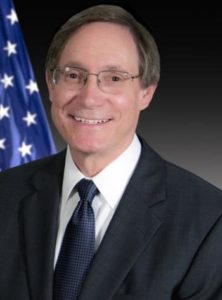 As products liability lawyers, we spend our days focused on the nature and proof of defectiveness. The tort law recognizes limitations on claims that products have defects when there are obvious dangers and user conduct defenses (think drunk driving). Contributory negligence, whether from failure to follow instructions or warnings, reckless behavior, or frankly, deliberate misuse
As products liability lawyers, we spend our days focused on the nature and proof of defectiveness. The tort law recognizes limitations on claims that products have defects when there are obvious dangers and user conduct defenses (think drunk driving). Contributory negligence, whether from failure to follow instructions or warnings, reckless behavior, or frankly, deliberate misuse

Cheryl A. Falvey
These Are a Few of Our Favorite IoT: NIST Finalizes Internet of Things Cyber Guidance
 NIST has finalized Internet of Things (IoT) risk management guidance, which derived from a draft publication. The guidance informs government agencies how to understand and manage IoT risks throughout device lifecycles. Industry can anticipate government focus on three high-level goals:
NIST has finalized Internet of Things (IoT) risk management guidance, which derived from a draft publication. The guidance informs government agencies how to understand and manage IoT risks throughout device lifecycles. Industry can anticipate government focus on three high-level goals:
- Device security;
- Data security; and
- Individual privacy.
The publication highlights three differences between…
Navigating the Definition of Consumer Product: How Broad is the CPSC’s Regulatory Reach?

- Is an escalator in a shopping mall a consumer product? The Consumer Product Safety Commission thinks so; here’s their recommendation on escalator safety and the use of soft soled shoes.
- Does the CPSC regulate the Internet of Things? To the extent networked products present safety risks, you bet they do. CPSC Commissioner Kaye has issued
…
New Technology is the New Wave in Consumer Protection: Is Your Company Ready?
 As more organizations incorporate technology in newfound ways to increase efficiency and effectiveness, government agencies have done the same. Take, for instance, the CPSC’s new recall app, which makes recall information more accessible to consumers on their mobile devices. Now government agencies are looking towards companies to apply the latest technologies to protecting consumer…
As more organizations incorporate technology in newfound ways to increase efficiency and effectiveness, government agencies have done the same. Take, for instance, the CPSC’s new recall app, which makes recall information more accessible to consumers on their mobile devices. Now government agencies are looking towards companies to apply the latest technologies to protecting consumer…
Straightening Your CAP After a Recall – Tips for Following a Corrective Action Plan
 Our clients often ask us what happens after a recall has been completed and what to expect from a visit from a regional CPSC inspector. We advise to be prepared to demonstrate what actions were taken regarding the Corrective Action Plan (CAP). The main purpose of the inspection appears to be to provide confirmation that…
Our clients often ask us what happens after a recall has been completed and what to expect from a visit from a regional CPSC inspector. We advise to be prepared to demonstrate what actions were taken regarding the Corrective Action Plan (CAP). The main purpose of the inspection appears to be to provide confirmation that…
Government Shutdown Does Not Postpone CPSC Product Safety Reporting Obligations
Do not assume a government shutdown means that reporting obligations at the CPSC are on hold. While the Commission’s staff designated as essential personnel are dedicated to protecting against substantial, immediate or “imminent threats to human safety” under the Commission’s shutdown directive[1], they will be reviewing reports to make that determination. The obligation…
Webinar: “Cataclysmic Change or Business as Usual: Product Regulation in the Trump Administration”
Join Us For A Complimentary Webinar – Thursday, October 25, 2018 – 12:00 – 1:00 PM ET
Two years into the Trump Administration and:
- The Consumer Product Safety Commission finally has a Republican majority,
- the Department of Transportation has released its 3.0 guidance on autonomous vehicles,
- NIST has published a 375 page recommendation on medical
…
Check Your Spam Filters!: CPSC Has Automated FOIA Communications
 You may have received an e-mail notice this week from the CPSC about the FOIA office’s new “Electronic Manufacturer Notification Collaboration Portal.” The main purpose of the Portal is to reduce costs by using e-mail instead of snail mail for Section 6(b) and other FOIA-related notifications.
You may have received an e-mail notice this week from the CPSC about the FOIA office’s new “Electronic Manufacturer Notification Collaboration Portal.” The main purpose of the Portal is to reduce costs by using e-mail instead of snail mail for Section 6(b) and other FOIA-related notifications.
Generally, automation of this process shouldn’t result in any meaningful changes in the FOIA notification and objection process. The Commission’s regulations allow firms to submit information with a request for confidential treatment. If the Commission receives a FOIA request for information previously designated confidential, the person who previously submitted the request for confidentiality is notified of the FOIA request and the need for quick response to protect that information from disclosure.
Given the quick turnaround time on requesting exemption from disclosure under FOIA, it is imperative for all industry players to make sure that the right contact is assigned – including someone in the Legal Department – to receive Portal notifications so your team can make quick decisions and take action if filing an objection with the CPSC is necessary. The same contact person used for the Clearinghouse or Saferproducts.gov is a good bet. But requesting an exemption under FOIA takes some analysis of the regulations. Was the information submitted under section 15? Is it a trade secret? And so, companies would be well advised to make sure they have a process in place and conduct a training program to protect confidential data from disclosure.
If you haven’t yet received any notifications about the new automated Portal, you should check in with the CPSC at cpsc-foia@cpsc.gov and provide contact information for the proper registration person. The full text of the notification recently sent by the CPSC is below:
Continue Reading Check Your Spam Filters!: CPSC Has Automated FOIA Communications
CPSC Reaction to Consumer Misuse – Human Factors Design Process

Product liability suits and regulatory product defect enforcement actions associated with consumer foreseeable – and unforeseeable – misuse have become the norm. Consumer product companies can mitigate these risks by focusing on use-related hazards and user-centered designs in an effort to reduce injuries and improve the usability of products. But the real question is how far to go with these efforts — at what cost and for what incremental benefit.
On March 15, 2018, the Consumer Product Safety Commission published Draft Guidance on the Application of Human Factors to Consumer Products for industry comment by May 14, 2018. The draft guidance was developed in conjunction with Health Canada’s Consumer Product Safety Directorate. CPSC and Health Canada aim to increase product safety by explaining to product designers and manufacturers how to incorporate human factors[1] into the design process.
The draft guidance describes the product design process and provides guidance on human factors considerations at each stage and then summarized in the graphic depictions collected at the end of this post. Because the guidance is not an enforceable rule, no cost benefit analysis accompanies the myriad of product design recommendations proposed.
Continue Reading CPSC Reaction to Consumer Misuse – Human Factors Design Process
Report on the Autonomous Vehicle Safety Regulation World Congress 2017
 The big takeaways from The Autonomous Vehicle Safety Regulation World Congress centered on the importance of a federal scheme for AV regulation and the reality of the states’ interest in traditional issues such as traffic enforcement, product liability, and insurance coverage. In keeping with those messages, the World Congress kicked off with NHTSA Deputy Administrator and Acting Director, Heidi King, speaking about NHTSA’s goals and interest followed almost immediately with wide participation from the states including California, Michigan, and Pennsylvania, among others.
The big takeaways from The Autonomous Vehicle Safety Regulation World Congress centered on the importance of a federal scheme for AV regulation and the reality of the states’ interest in traditional issues such as traffic enforcement, product liability, and insurance coverage. In keeping with those messages, the World Congress kicked off with NHTSA Deputy Administrator and Acting Director, Heidi King, speaking about NHTSA’s goals and interest followed almost immediately with wide participation from the states including California, Michigan, and Pennsylvania, among others.
Deputy Administrator King emphasized NHTSA’s desire to foster an environment of collaboration among all stakeholders, including the states. Ms. King emphasized that safety remains the top priority at NHTSA. NHTSA has provided some guidance, and looks forward to hearing from stakeholders about the best way to support and encourage growth in autonomous vehicles. NHTSA wants to provide a flexible frame work to keep the door open for private sector innovation. It is necessary to build public trust and confidence in the safety of autonomous vehicles, and that can only accomplished by all stakeholders working together.
